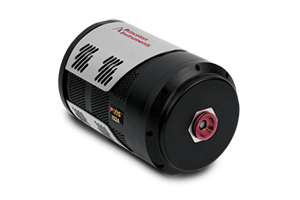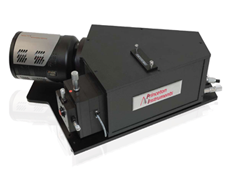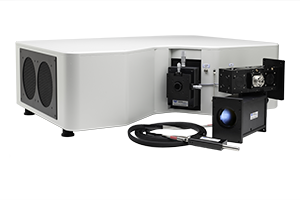Wei Yang, Florian Knorr, Jürgen Popp and Iwan Schie
Optics Express
Development and evaluation of a hand-held fiber-optic Raman probe with an integrated autofocus unit
Introduction
Researchers from Germany use a new setup with dynamically adjustable focus to improve the quality of Raman spectroscopy with handheld Raman probes for applications in biological and clinical spectroscopy.
Researchers around Jürgen Popp and Iwan Schie from Jena (Germany), are exploring the use of Raman spectroscopy for the characterization of biomaterials and the detection of diseases. Raman spectroscopy combines the advantages of having extremely high ability for identifying molecules (molecular fingerprints) while being a label free technique.
However, Raman scattering is a weak process with typically less than one in a million photons interacting with the sample, so sensitive instrumentation is crucial for signal collection, in particular in clinical and surgical applications of the technique

Raman spectroscopy on biological tissue prefers the use of fiber optic probes due to their small size and high flexibility for measuring samples that are difficult to access with standard microscopy setups.
While Raman setups for tissue measurements often use contact probes, non-contact measurements can be more desirable to avoid sample damage or contamination. Non-contact probes rely on optical lenses to focus the excitation laser onto the sample as well as collect the signal, however the signal collection is extremely sensitive to changes in focus position. This is particularly important for handheld probes where it is harder to maintain a fixed working distance to the sample.
In a recent publication the researchers from Jena describe a new setup with “a new fiber optical Raman probe design and implementation with an integrated liquid lens that allows a rapid focal distance adjustment and enables significant signal stabilization when compared to a fixed-focus implementations.” The researchers describe the experimental setup using a FERGIE-785 nm laser for excitation at 300 mW as well as a LS-785 spectrometer with a PIXIS-100BRX CCD camera for detection of the Raman signal.
The new setup is characterized using open loop control and external ultrasonic distance sensor as well as a closed loop approach based on optimizing the detected Raman signal. The feedback is used to adjust the focal length using the liquid lens. The closed loop approach promises better optimization accuracy but is challenging to implement when signal levels are weak. The new setup is successfully applied to handheld measurements as well as Raman imaging scans over a tilted sample.
The new adjustable focal length setup is not only successfully improving the performance of handheld Raman spectroscopy probes but can also be applied to other measurement techniques.



